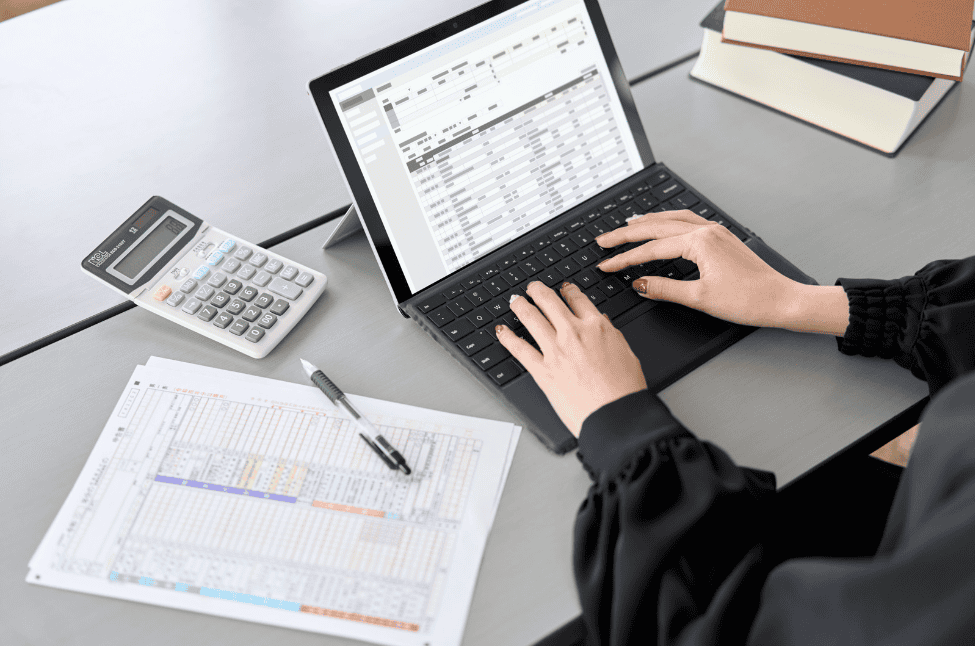You’re not alone if you are trying to end a losing streak in your trading.
Many traders, especially those new to the market, encounter periods of difficulty and frustration.
Fortunately, there are practical steps you can take to regain control and get back on the path to consistent performance. I have spent years navigating the complexities of Forex trading and have seen firsthand the challenges traders face.
This guide offers a straightforward, five-step plan to help you regain your footing and build a disciplined approach to trading.
Following these steps, you can develop a more structured and resilient trading strategy, maintain emotional control, and work towards your financial goals, even in challenging market conditions.
Set Clear, Realistic Goals and Rules
Establishing clear, realistic trading goals and rules is the first step to breaking a losing streak. It provides a solid framework for your trading decisions.
Why This Is Important
Defining specific and achievable goals gives your trading activities direction and focus, helping you avoid impulsive decisions.
Creating rules for entry, exit, and risk management based on these goals is essential for maintaining discipline.
Having well-defined parameters reduces the likelihood of making emotional decisions that can lead to further losses.

What You Should Do
Begin by setting clear trading goals, such as the number of trades you aim to make per week or the maximum risk percentage per trade.
Next, create objective rules for entering and exiting trades based on criteria like technical indicators or fundamental analysis. Write these rules down and keep them visible while trading to ensure they remain at the forefront of your decision-making process.
Example of Setting Realistic Goals and Rules
For example, if you decide to achieve a 5% return on your capital per month, you must break this goal down into manageable steps.
Suppose your account size is $10,000. A 5% monthly return means aiming for a $500 monthly profit.
To achieve this, you might set a rule to risk at most 1% of your account balance on any trade, meaning each trade would have a maximum risk of $100.
By keeping your risk per trade small, you can better manage losses and avoid significant drawdowns that could derail your goal.
Studies have shown that traders who risk more than 2% of their capital per trade tend to experience higher account balance volatility and are more likely to experience a significant capital loss over time.
Establishing predefined rules for entry, exit, and risk management can reduce the impact of emotional decision-making and contribute to a more stable and controlled trading performance.
By following these practices, you can develop a disciplined approach to trading that mitigates risk and enhances your ability to recover and end a losing streak.
Develop a Routine for Emotional Management
Effective trading is as much about managing emotions as it is about understanding markets.
A routine designed to help you manage stress and maintain emotional balance can significantly improve your trading outcomes.
Why This Is Important
Emotions like fear, greed, or frustration can undermine even the most well-thought-out trading strategies.
Establishing a routine and utilizing techniques to manage these emotions ensures that decisions are driven by logic and strategy, not impulsive reactions.
Creating a routine that prioritizes emotional stability reduces the chances of letting emotions dictate your trades, which is critical for consistent success.

What You Should Do
Create a daily pre-trading routine that includes reviewing market news, analyzing charts, and reaffirming your trading plan.
Incorporate techniques like deep breathing exercises, meditation, or physical activity to help maintain calm and focus.
If you find yourself experiencing strong emotions, step away from trading temporarily to reassess your mindset before making any decisions.
Example of Emotional Management Techniques
Consider the experience of a seasoned trader who noticed that after a series of losses, they tended to overtrade to “win back” what they had lost.
Frustration and a longing for immediate redemption drove this emotional reaction.
To combat this, the trader developed a strict pre-trading routine that involved a 10-minute meditation session to clear their mind, followed by a review of their trading plan and key market indicators.
This routine helped them approach each trading day with a fresh perspective, reducing the influence of past results on current decisions.
Overcoming Emotion-Driven Decisions
In my experience, developing a routine for emotional management is one of the most crucial aspects of successful trading.
Early in my trading career, I noticed a pattern: after a losing trade, I would feel compelled to immediately jump back in, convinced that the next trade would be the one to turn things around.
More often than not, this approach only led to further losses and frustration.
This experience also motivated me to move to longer-term position trading rather than shorter-term trading strategies.
This change in approach had a profound impact. I became more disciplined and less prone to making rash decisions.
My trades aligned more with my overall strategy, and I saw a noticeable improvement in my trading performance.
This experience reinforced that managing emotions is not an optional part of trading but a necessary practice for long-term success.
Monitor and Review Your Trades Regularly
Regularly monitoring and reviewing your trades is critical to improving your trading performance.
Keeping detailed records allows you to learn from successes and mistakes, ensuring continuous improvement.
Why This Is Important
A comprehensive review process helps you identify patterns in your trading behavior, both positive and negative, as well as deviations from your strategy.
By analyzing these patterns, you can make informed adjustments to your trading plan and behaviors, which are vital to maintaining discipline and improving performance over time.

What You Should Do
Maintain a trading journal where you record each trade, including the rationale behind it, the strategy used, the outcome, and any emotional reactions.
Set aside time regularly to review this journal, looking for trends or deviations that might affect your results. Use these insights to refine your trading approach and maintain a disciplined mindset.
Example of Effective Trade Monitoring
Consider the case of a trader who noticed a pattern of frequent losses on trades executed during periods of high market volatility.
Reviewing their trading journal, the trader discovered that these losses often occurred when he deviated from his usual strategy, driven by a desire to capitalize on sudden market movements.
Recognizing this pattern, they implemented a rule to only trade during periods of high volatility if a clear opportunity aligned with their established strategy presented itself.
As a result, the trader’s performance improved significantly. By monitoring their trades and identifying specific situations where they were prone to making mistakes, they could adjust their approach and avoid repeating past errors.
This process helped the trader to stay disciplined and focus only on high-probability trades that fit within their trading plan.
How Reviewing Trades Improved My Strategy
Early in my trading career, I did not consistently review my trades.
I believed I could rely on my memory to understand what worked and what didn’t. However, after a series of unexplained losses, I realized I needed a more structured approach.
I began keeping a detailed trading journal, recording every aspect of each trade — including my reasoning, market conditions, strategy, and emotional state before, during, and after the trade.
Over time, patterns began to emerge. I noticed that my losing trades often occurred when I was busy with other things and needed to invest more time in the detailed analysis trading required.
I also saw that I was likelier to break my risk management rules after a losing trade, trying to “make up” for the losses by increasing my position size — a classic mistake known as “revenge trading.”
Armed with these insights, I made several changes to my trading routine. First, I reserved hours every week for market analysis with no exceptions.
Second, I reinforced my risk management rules, setting strict limits on position size.
These changes markedly improved my trading performance, reducing the frequency of my losses and increasing my consistency.
Regularly reviewing my trades and documenting my behaviors and outcomes gave me the clarity I needed to make better decisions.

Tips for Maintaining a Trading Journal
1. Record Every Trade: For each trade, document key details such as the entry and exit points, the size of the position, and the market conditions at the time. Include your reasoning for entering or exiting the trade and your emotions.
2. Analyze Regularly: Review your trading journal each week or month. Look for patterns in both your winning and losing trades. Identify recurring mistakes or deviations from your strategy, and determine if your emotional state affects your decisions.
3. Adjust and Refine: Use the insights gained from your trade reviews to adjust your strategy, risk management rules, or trading routine. For example, if you notice that specific trades consistently lead to losses, consider revising your entry criteria or avoiding similar trades in the future.
By consistently monitoring and reviewing your trades, you can better understand your trading behavior, make data-driven adjustments to your strategy, and ultimately improve your performance.
This disciplined approach helps you learn from past mistakes and builds the foundation for long-term success in trading.
Utilize Support Systems and Accountability
Engaging with a trading community, mentor, or accountability partner can provide valuable support and feedback, helping you stay committed to your trading plan.
Trading can be isolating, and having external input can be invaluable for maintaining discipline and perspective.
Why This Is Important
Support systems and accountability can significantly impact trading performance by offering external perspectives, fostering discipline, and encouraging continuous improvement.
Traders often fall into cognitive biases or habits that may go unnoticed without outside feedback.
Having someone to discuss your trades, challenges, and progress can provide new insights and help keep you on track.

What You Should Do
Join a trading group or find a mentor or accountability partner. Regularly discuss your trades, challenges, and progress with them to gain new insights and stay motivated. Knowing that you must report your activities to someone else can help reinforce your commitment to your trading plan.
Example of Leveraging Support Systems
Consider the example of a trader struggling with consistency in their trading. Despite having a solid strategy, they frequently deviated from their rules, often due to emotional decision-making or impatience.
They decided to join an online trading community where they could share their experiences and receive feedback from other traders.
By actively participating in this community, the trader found that discussing their trades helped them see their mistakes more clearly and objectively.
The feedback from other members, especially those with more experience, provided new perspectives and strategies they hadn’t considered.
Over time, this engagement helped the traders become more disciplined. They were more mindful of their actions, knowing they would need to explain their decisions to others.
As a result, their trading performance improved, and they could stick to their plan more consistently.
Practical Tips for Utilizing Support Systems
1. Join a Trading Community: Find an online or local group of traders where you can regularly engage in discussions, share insights, and receive feedback.
Platforms like forums, social media groups, or even professional trading networks can offer valuable opportunities to connect with like-minded individuals.
2. Find a Mentor or Accountability Partner: Look for a mentor with more experience or someone at your level willing to exchange feedback.
Set a schedule to discuss trades, review strategies, and provide mutual support. This relationship can help you stay focused and disciplined in your trading.
3. Engage Regularly: Commit to participate actively in your chosen community or with your accountability partner. Share your trading goals, be open to feedback, and reflect on the advice and experiences others share.
You create an environment that fosters growth, discipline, and continuous learning by leveraging support systems and accountability. Trading doesn’t have to be a solitary activity; engaging with others allows you to gain new perspectives, stay motivated, and improve your trading performance.
Focus on Continuous Learning and Adaptation
Continuous learning and adaptation are essential for long-term success in trading in a constantly changing market environment.
The ability to learn, adapt, and improve distinguishes successful traders from those who fail to sustain profitability.
Why This Is Important
The Forex market is highly dynamic, influenced by countless factors such as economic data releases, geopolitical events, and changing market sentiment.
Relying solely on one strategy or a fixed set of knowledge can quickly lead to stagnation or losses for traders.
To stay competitive and profitable, it’s vital to continuously educate yourself on market developments, refine your strategies, and adapt to new conditions.

Continuous learning fosters a deeper understanding of the markets, crucial for developing a robust, adaptable trading approach.
What You Should Do
Dedicate regular time to learning through webinars, courses, and other educational resources.
Stay updated on market developments, but avoid overreacting to short-term movements. Focus on building a deep understanding of your trading strategy and how to adjust it as necessary to stay aligned with broader market trends.
Example of Continuous Learning and Adaptation
Consider the experience of a trader who initially focused solely on technical analysis using a specific set of indicators, such as moving averages and RSI.
This approach worked well for a time, but as market conditions shifted — particularly during periods of high volatility — the trader found their strategy was no longer as effective.
Instead of sticking rigidly to their initial strategy, they invested time learning about other aspects of trading, such as fundamental analysis, macroeconomic factors, and sentiment analysis.
They attended webinars, read books on economic indicators, and followed market news more closely.
Over time, they started integrating these new insights into their trading plan. For example, they began considering central bank policy announcements and economic data releases when planning trades, allowing them to anticipate potential market movements better.
By adapting their strategy to include technical and fundamental analysis, they could navigate volatile periods more effectively, significantly improving their overall trading performance.
Embracing Continuous Learning
When I started trading, I focused primarily on a single trading strategy that relied only on technical analysis.
While this approach brought some initial success, I soon realized that my strategy had limitations, notably when market conditions changed. For example, during periods of low volatility or sudden market shocks, my strategy struggled to yield consistent results.
Recognizing this, I committed to a continuous learning plan. I started by dedicating a portion of each week to expanding my knowledge base.
I took online courses on various trading strategies, attended webinars led by experienced traders, and read extensively about global economic trends and their impact on the Forex market.
One of the most valuable lessons I learned came from a risk management book.
This new knowledge prompted me to use economic indicators and news releases to inform my decisions, complementing my technical analysis with a broader understanding of the market context.
As a result, my trading approach became more adaptable and resilient to market fluctuations.
This method improved my profitability and reduced my stress, as I felt more prepared to handle different market scenarios.

Practical Tips for Continuous Learning and Adaptation
1. Stay Informed on Market Trends: Follow financial news, market analysis, and updates from reputable sources. Staying informed will help you understand the macroeconomic factors influencing currency movements and adjust your strategies accordingly.
2. Invest in Your Education: Regularly participate in webinars, take online courses, or attend workshops on trading strategies, risk management, and market psychology.
3. Experiment with New Strategies: Before implementing them in live trading, experiment with new strategies in a demo account. A demo account lets you understand how different strategies perform under various market conditions.
4. Reflect and Adapt Regularly: Allocate time to review your trading performance and reflect on your learning. Adapt your strategy as needed based on new knowledge or changes in market conditions.
5. Engage with the Trading Community: Join forums, discussion groups, or trading communities to learn from other traders’ experiences, share your insights, and stay updated on the latest trends and techniques.
Focusing on continuous learning and adaptation builds the flexibility and resilience to navigate an ever-changing market landscape.
This approach enhances your knowledge and skills and ensures you remain well-positioned to achieve long-term success in your trading career.
Conclusion
By implementing these five steps, you can regain confidence in trading, maintain discipline, and stay focused on your goals even when facing challenging market conditions.
Remember that trading is a long-term endeavor, and setbacks are a natural part of the process. You can overcome obstacles and achieve success with the right approach and mindset.
What’s the Next Step?
Consider how you try to end a losing streak today and what practices you can improve.
In addition, look for opportunities to incorporate these best practices in your trading.
Once you’re ready to trade, choose a strategy and process you believe will work for you.
If you need help developing an analysis process, you can use our Six Basics of Chart Analysis.
If you’re unfamiliar with the Six Basics, you can learn them here for free.
The “Six Basics” will give you a strong foundation in chart analysis, which you can incorporate with what you’ve learned about how to end a losing streak.
In addition, when you get the “Six Basics,” you’ll also get Forex Forecast delivered to your inbox every Sunday.
Forex Forecast includes:
- Trade Ideas and Analysis
- I will use the Six Basics of Chart Analysis and Advanced Strategies to show you the trade opportunities I’m watching.
- Case Studies from Around the Web
- Watch how applying the Six Basics worked on some of the best, most profitable trades.
- Trading Education Guides and Videos
- Want to learn most Six Basics techniques and advanced strategies?
- I produce videos and guides to help you learn and improve trading practices.
- Links to New Articles
- I publish new articles on topics traders will want to know about every week, and you can find out when they post.
- Positionforex.com News
- Did something change at positionforex.com? Learn about it here first!
- Links to upcoming webinars
- Attend free webinars to improve your trading.
- And Much More
- Tools, Membership-only Videos, and more will be released in the Forex Forecast.
The best part – it’s completely free.

Frequently Asked Questions
What Should My Trading Goals Look Like?
Your trading goals should be specific, measurable, and realistic, such as aiming for a monthly 5% return on capital. Break down goals into smaller targets, like weekly objectives, to maintain focus and discipline.
How Can I Better Manage My Emotions While Trading?
Develop a structured routine that includes pre-trading preparation, relaxation techniques, and breaks after losses. This helps keep your emotions in check and ensures decisions are based on strategy, not impulse.
Why Is It Important to Review My Trades Regularly?
Regular trade reviews help you learn from mistakes and successes, identify patterns, and refine your strategy. Traders who review their trades consistently are more likely to achieve long-term profitability.
How Can a Support System Help End a Losing Streak?
A support system provides feedback, motivation, and new perspectives, helping you stay disciplined and avoid emotional decisions. Engaging with a trading community or mentor can enhance your overall performance.
What Are the Best Ways to Continue Learning and Adapting in Trading?
To stay competitive, stay informed by attending webinars, taking courses, reading, and engaging with other traders. Regularly update your knowledge and adjust strategies based on market changes.

